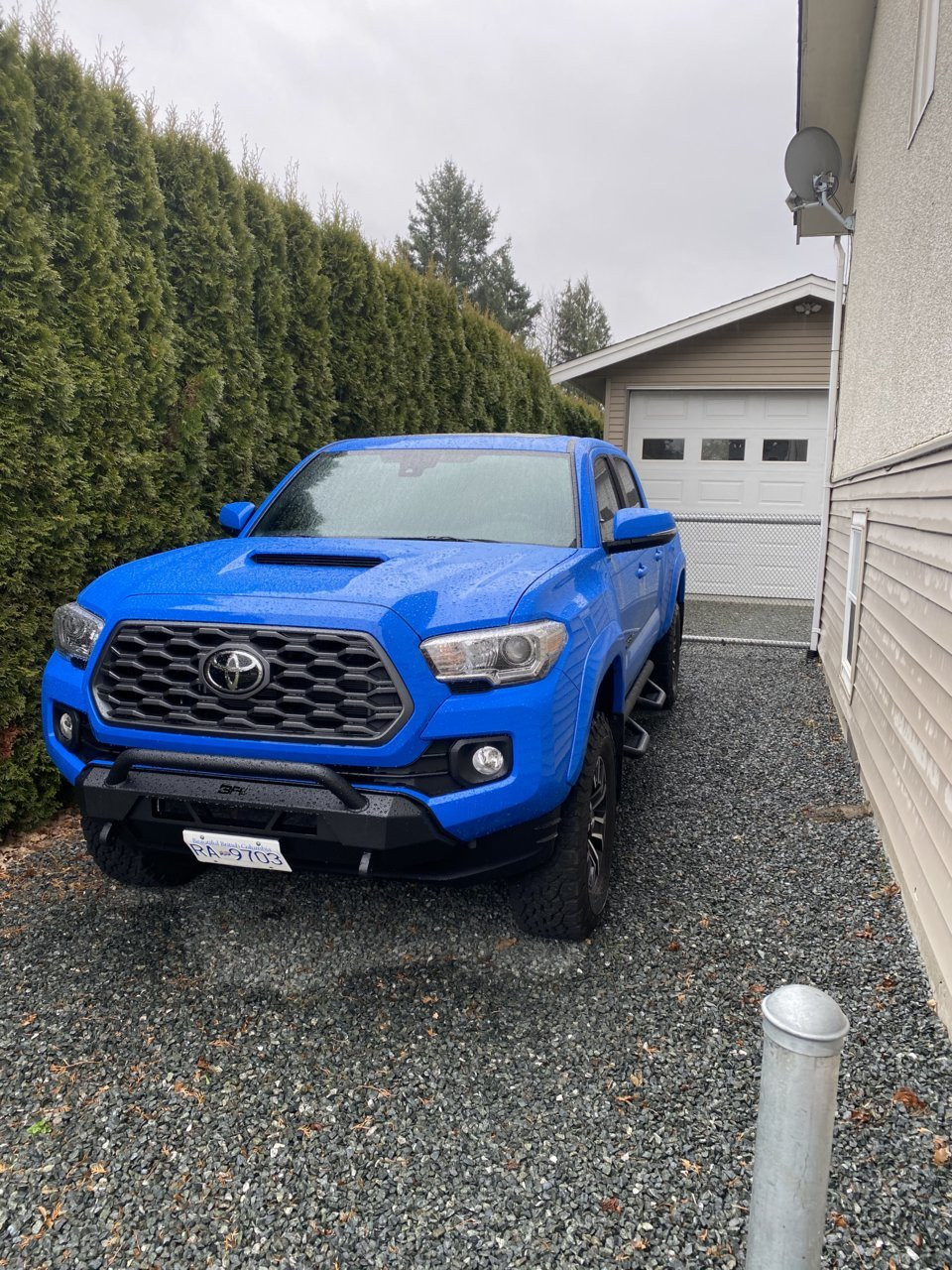Many Toyota Tacoma owners value both the rugged aesthetics and practical fuel consumption of their trucks. However, modifications, while enhancing the look and off-road capability, can sometimes impact fuel economy. A common question arises when owners consider or have installed leveling kits and larger tires: how significantly will these changes affect their Toyota Tacoma Fuel Economy? This article delves into a real-world scenario from a Tacoma owner experiencing this very issue and explores potential factors and community insights.
Owner’s Experience: Leveling Kit and MPG Drop
A Toyota Tacoma owner recently shared their experience with fuel economy after making some popular modifications to their 2021 Tacoma Sport Double Cab. Equipped with a 2-inch Truxxx leveling kit, larger BFG 265/70/17 tires (Load C), a slimline bumper, and nerf bars, this Tacoma’s fuel consumption is noticeably higher than expected. Despite a very light driving style and short commutes, the owner is seeing fuel economy hovering around 17.5-17.7 liters per 100 kilometers, which translates to approximately 14 miles per gallon (MPG). This is a considerable deviation from the factory-specified range of 10.5-13.8L/100kms.
 Toyota Tacoma with modifications
Toyota Tacoma with modifications
The owner expresses concern, especially given that even with modifications, the fuel economy is worse than their previous, older GMC truck with even more extensive modifications. The dealership’s explanation points to the leveling kit and larger tires as culprits, but the owner questions if these relatively minor changes should lead to such a drastic decrease in MPG. Claims from other Tacoma owners online boasting around 19 MPG with similar modifications further fuel the confusion and concern.
Factors Affecting Toyota Tacoma Fuel Economy Post-Modification
Several factors can contribute to a reduction in Toyota Tacoma fuel economy after installing a leveling kit and larger tires:
- Increased Weight: Leveling kits, especially those including heavier springs or spacers, add weight to the vehicle. Larger, more rugged tires are also significantly heavier than stock tires. Increased unsprung weight and overall vehicle weight directly impact fuel consumption, requiring the engine to work harder to move the vehicle.
- Aerodynamics: Leveling the front of the Tacoma can slightly alter the vehicle’s aerodynamics. While a 2-inch lift might seem minor, even small changes to aerodynamics can become more noticeable at highway speeds, increasing drag and fuel consumption.
- Rolling Resistance: Larger, off-road oriented tires typically have higher rolling resistance than the factory tires designed for fuel efficiency. This means more energy is required to rotate the tires, leading to decreased MPG. Tire pressure also plays a crucial role; maintaining optimal tire pressure for the larger tires is essential to mitigate rolling resistance.
- Gear Ratio and Speedometer Calibration: Upsizing tires effectively changes the vehicle’s final drive ratio. This can lead to the engine working harder at certain speeds and may cause the speedometer and odometer to be inaccurate if not recalibrated. An inaccurate odometer can skew fuel economy calculations.
Seeking Community Insights and Solutions
The Tacoma owner’s situation highlights a common concern among truck enthusiasts. While modifications enhance the vehicle’s appearance and capability, understanding the potential impact on fuel economy is crucial. Experiences can vary widely based on driving habits, specific modifications, and even environmental factors.
For Tacoma owners experiencing similar drops in fuel economy after modifications, seeking feedback from the Tacoma community can be invaluable. Sharing experiences and comparing notes on modifications and MPG can help determine if the observed fuel consumption is within the expected range or if there might be other underlying issues to investigate. Simple checks like tire pressure, air filter condition, and driving style can also contribute to optimizing fuel economy.